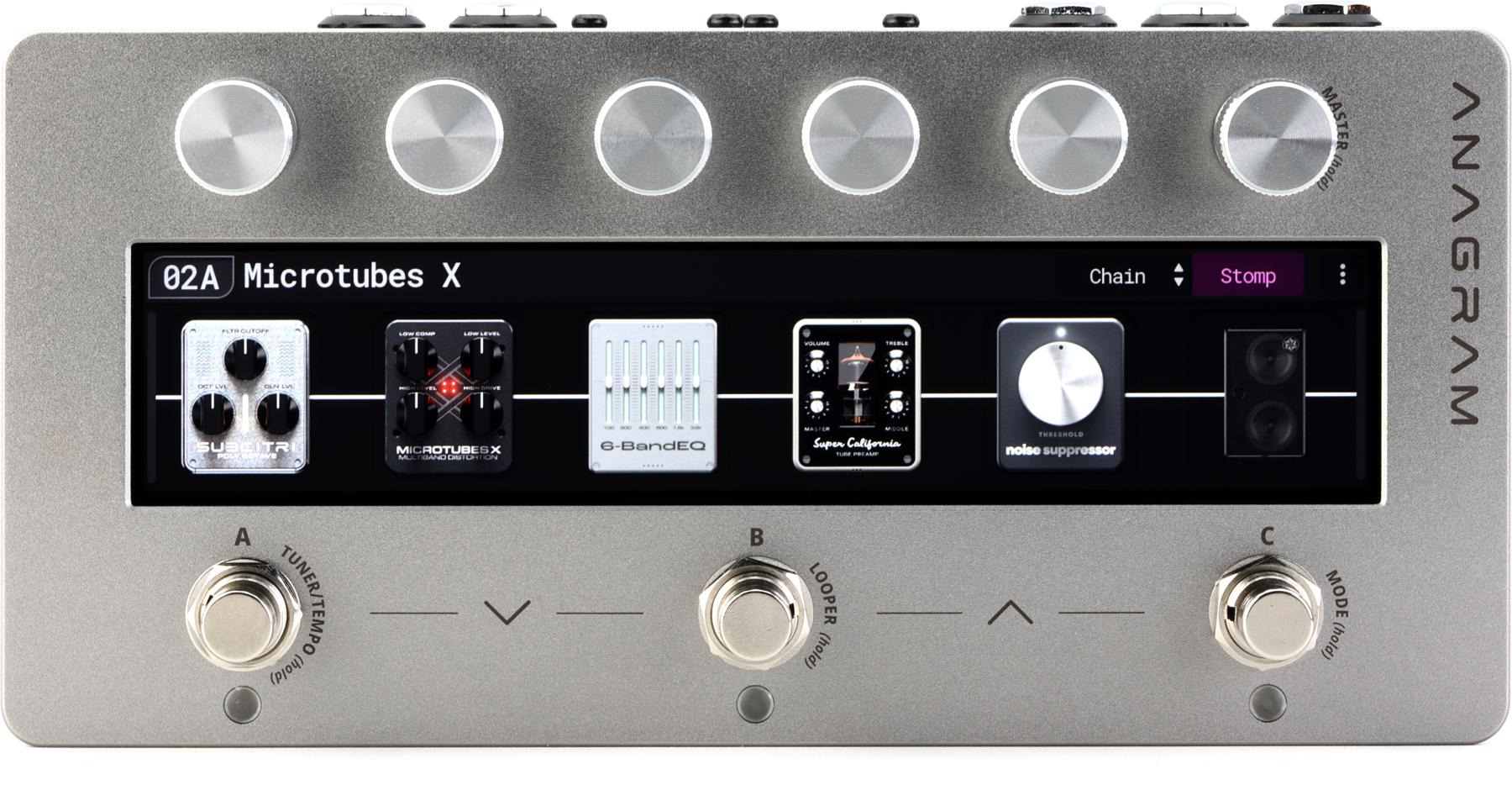Was Tom Scholz’s Rockman the high-water mark of guitar-tone convenience? The very fact that this headphone amp, intended primarily as a consumer-grade practice tool, ended up on some of the biggest rock records of the ’80s definitely makes a case. And much like Sony’s Walkman revolutionized the personal listening experience, it’s easy to argue the Rockman line of headphone amps did the same for guitarists.
MXR Rockman X100 Recreates Tom Scholz's Iconic Boston Guitar Sound | First Look
But just as decades of advances in listening technology make the Walkman now seem clunky and dated, modern guitar tech makes the Rockman look like old news. Multi-effects units, modelers, and portable interfaces all surpass the convenience of the Rockman in form factor as well as in sheer number of sonic options. But while there are any number of ways to dial up an ’80s-style guitar tone these days, nothing’s better than the real thing. The Rockman’s analog tones are still as legit as it gets. Though Dunlop continues to produce the Guitar Ace, Metal Ace, and Bass Ace headphone amps (for a cool $99 street), a pedal version with the functionality of the original would be the ultimate modern package for ’80s fetishists, right? Enter the MXR Rockman X100.
With Tones Like These, Who Needs Options
After the release of the original Rockman, Scholz continued to develop the product, spawning a whole line. But for its pedal resurrection, the MXR team set their sights on the Rockman X100, which used hard-clipping LED diodes for its two distorted settings. The new stompbox version recreates all four modes from the original: cln2 is the default setting, cln1 in the second position is EQ’d with a mid-boost, edge delivers moderate clipping, and dist is high-gain. All are switchable via a small LED-lit mode button, and a control input allows for external mode switching. Another button activates an analog chorus circuit using MN3007 bucket brigade chips, as in the original.
To drive home the ’80s aesthetic, MXR used sliders for volume and input gain controls. Volume determines output, while input gain is tied to compression. Higher input gain means more compression, which is tuned for slower release on the two clean modes, and a fast release on both dirty modes. The X100 works in both mono and stereo, but to change between them, you have to pop off the back to access an internal switch. Just make sure a TRS cable is used for stereo mode, or else the output will be muted while the pedal is bypassed.
The only things I noticed that are missing from the original’s simple set of features is the headphone output and the echo settings. I don’t know how many players would find value in the headphone jack, and considering that would add circuitry, it’s probably best for cost and space savings that it was excluded. As for the echo, you can argue that it’s canon, but I find it to be the least essential feature and don’t miss it, personally.
(Much) More Than a Feeling
Since I do not have an original Scholz X100 sitting on my desk, I’m using YouTube videos and records—Def Leppard’s Hysteria, Huey Lewis and the News’ Sports, and Joe Satriani’s Surfing with the Alien, for example—as my reference points. Those are high bars to clear, and the MXR gets there.
The default cln2 setting delivers instant gratification, with a full-bodied, sparkly tone, no matter what guitar I played through it. And though it provides loads of ’80s fun, it’s much more versatile than that, offering a great all-round clean tone that requires no additional processing. Though it might seem odd that cln2 is the default, switching to cln1’s thinner, more mid-focused sound makes the design decision clear. I can imagine situations where I’d need to cut through a mix and cln1 would be preferred, but I found myself sticking with the default mode for all my clean needs.
The distorted modes are differentiated mostly by how much gain they offer. Edge tones live just beyond the point of overdrive, and the input gain control adds a range of extra texture. The dist mode is full-on, pick-squeal-inducing high-gain saturation, with loads of everlasting sustain. These modes lean into the aesthetic much harder than the clean modes, making it a less versatile tool, but for ’80s rock excess, I can’t imagine a better option.
On a couple recording sessions, I plugged the X100 right into an interface and board to deliver spanky direct clean tones as well as tight, saturated distortion. In doing so, I discovered that direct recording is my preferred use for the X100. That’s not to say it doesn’t sound great through an amp—it does. But plugging into a front end of an amp yields less classic and authentic Rockman sounds, as the amplifier’s preamp colors the tone. Plugged through a few Fenders, I found that the treble needed taming, a problem I didn’t have when forgoing the amp. For live playing, I might explore plugging the X100 into the return input on an amp’s effects loop or right into a powered speaker to deliver an unadulterated Rockman sound more in line with the original.
The Verdict
MXR nailed it with the Rockman X100 pedal by focusing on the limited options of the original unit and getting them just right. For $229, you not only get a great ’80s rock tone, you get what is arguably the ’80s rock tone, with no other gear required, unless you want to add a little ’80s-vintage reverb too. As a performance tool, it’s probably best to think less like you’re using a pedal and more like you’re using the original in a different form, which is to say that plugging straight into an amp isn’t the only way to get the sound you want—and, in fact, it’s probably not even the best way. For recording, it’s a perfect tool. PG






















